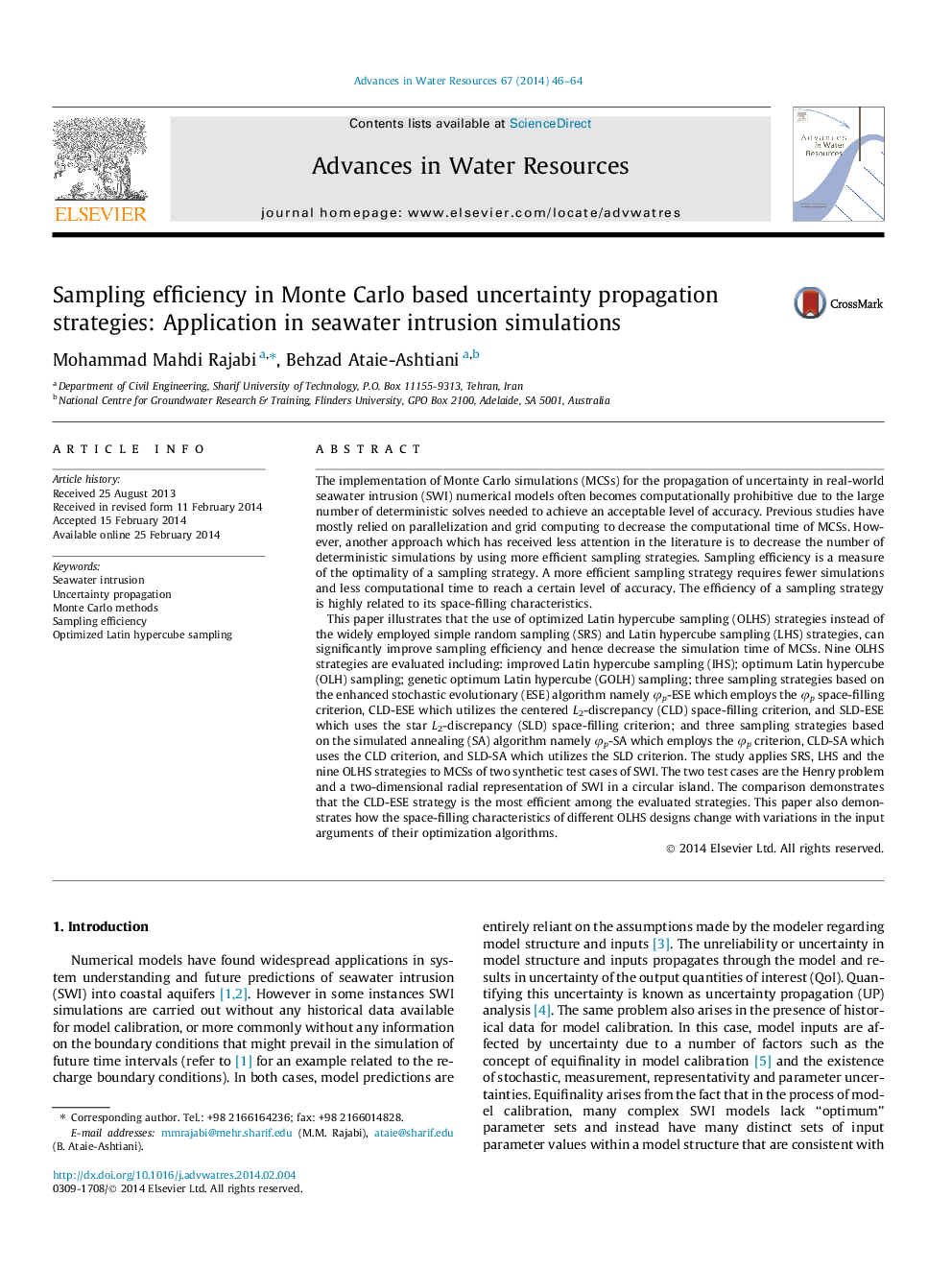| کد مقاله | کد نشریه | سال انتشار | مقاله انگلیسی | نسخه تمام متن |
|---|---|---|---|---|
| 4525576 | 1625642 | 2014 | 19 صفحه PDF | دانلود رایگان |
• We compare the efficiency of various sampling strategies in Monte Carlo simulations.
• The comparison is based on two synthetic test cases of seawater intrusion.
• Optimized Latin hypercube sampling strategies can significantly improve efficiency.
• There is significant difference in the efficiency of various optimized Latin hypercube sampling strategies.
The implementation of Monte Carlo simulations (MCSs) for the propagation of uncertainty in real-world seawater intrusion (SWI) numerical models often becomes computationally prohibitive due to the large number of deterministic solves needed to achieve an acceptable level of accuracy. Previous studies have mostly relied on parallelization and grid computing to decrease the computational time of MCSs. However, another approach which has received less attention in the literature is to decrease the number of deterministic simulations by using more efficient sampling strategies. Sampling efficiency is a measure of the optimality of a sampling strategy. A more efficient sampling strategy requires fewer simulations and less computational time to reach a certain level of accuracy. The efficiency of a sampling strategy is highly related to its space-filling characteristics.This paper illustrates that the use of optimized Latin hypercube sampling (OLHS) strategies instead of the widely employed simple random sampling (SRS) and Latin hypercube sampling (LHS) strategies, can significantly improve sampling efficiency and hence decrease the simulation time of MCSs. Nine OLHS strategies are evaluated including: improved Latin hypercube sampling (IHS); optimum Latin hypercube (OLH) sampling; genetic optimum Latin hypercube (GOLH) sampling; three sampling strategies based on the enhanced stochastic evolutionary (ESE) algorithm namely φp-ESE which employs the φp space-filling criterion, CLD-ESE which utilizes the centered L2-discrepancy (CLD) space-filling criterion, and SLD-ESE which uses the star L2-discrepancy (SLD) space-filling criterion; and three sampling strategies based on the simulated annealing (SA) algorithm namely φp-SA which employs the φp criterion, CLD-SA which uses the CLD criterion, and SLD-SA which utilizes the SLD criterion. The study applies SRS, LHS and the nine OLHS strategies to MCSs of two synthetic test cases of SWI. The two test cases are the Henry problem and a two-dimensional radial representation of SWI in a circular island. The comparison demonstrates that the CLD-ESE strategy is the most efficient among the evaluated strategies. This paper also demonstrates how the space-filling characteristics of different OLHS designs change with variations in the input arguments of their optimization algorithms.
Figure optionsDownload as PowerPoint slide
Journal: Advances in Water Resources - Volume 67, May 2014, Pages 46–64
